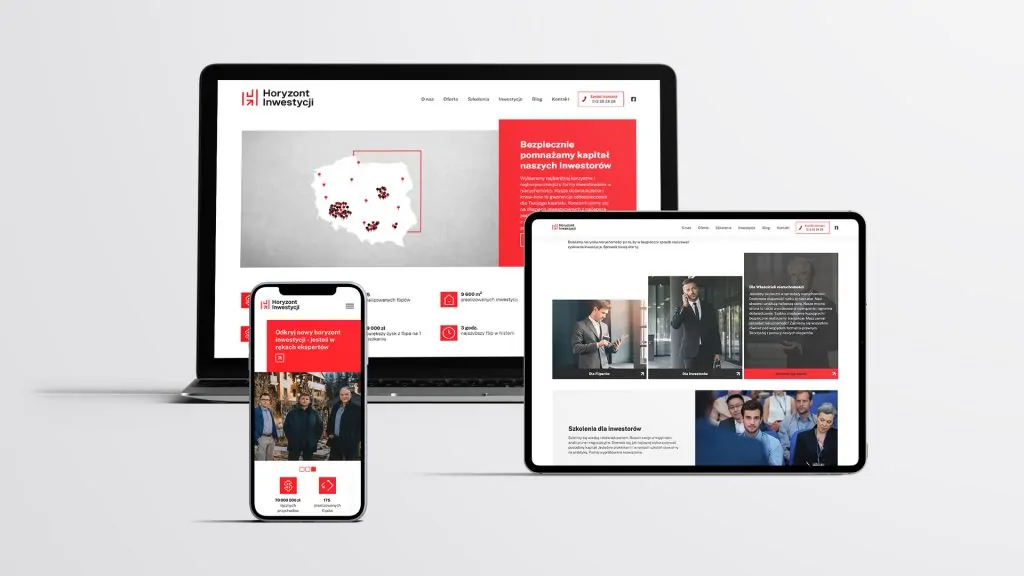PR agency is a multi-purpose institution. Its task is, among others building the company's image and creating demand for its products. Her tasks also include the creation of coherent, strategic communication plans and brand exposure on various levels. What are the benefits of starting cooperation with a PR agency? It is primarily about creating a strong brand focused on development, as well as a guarantee of reaching the right target groups. Both from the B2B and B2C areas. The proposal of a PR agency usually includes: consulting, product and services.
- What is PR?
- Several definitions of PR
- Piarowiec - what is this profession?
- The roots of public relations
- Erystyka or the art of dispute
- The beginnings of PR
- Collegium Propagandum - the first PR agency?
- Gutenberg's revolution and PR
- The sharks of capitalism
- What is it? PR! Ojcowie - founders of public relations
- The era of public relations
- Pillars of PR
- PR agencies in Poland
- PR agency - reputation
- PR is not propaganda
- Political marketing and PR
- Reliable PR
- Goals and functions of public relations
- Public relations roles
- PR models
- Publicity
- Interdisciplinarity of PR
- PR information model
- The communication paradigm
- The role of management sciences in public relations activities
- Marketing in PR
- Cultural model of public relations
- Psychology and PR
- PR agencies' areas of activity
- Culture
- Society
- Health Service
- Science
- Education
- The importance of public relations in running a business
- PR activities
- What distinguishes a modern PR agency?
- PR agency - what is it?
- What is a PR agency?
- Responsible PR
- Corporate social responsibility
- Company PR - advantages and disadvantages
- PR agency - tasks
- Main PR tools
- Other public relations agency tools
- PR agency
- Building a comprehensive communication strategy
- How is the communication strategy built?
- Public relations tender
- Key performance indicators, i.e. KPIs
- PR agency - sample KPIs
- What is crisis public relations and how does it help the company?
- Media relations
- PR campaigns, press telemarketing, Internet communication and KPI
- Public relations agency
- Internal communication by PR agencies
- Employer branding
- Eventy PR agency
- Public relations event
- Creation, i.e. graphics and copywriting, the so-called PR logo
- Content marketing - a proven PR tool
- SEO and SEM online campaigns
- e-PR
- PR strategy on the Internet
- Quick image improvement on the web
- Online PR improvement
- PR versus sales and marketing
- Detailed PR knowledge base
- PR agency and image crises
- Crisis PR
- How does a PR agency build a communication strategy?
- Principles of cooperation with a PR agency
- PR agency - price list
- PR agency work
- PR specialists - competences
- PR team
- What values should a PR agency be guided by?
- The future of PR agencies
- PR agency in a nutshell, i.e. a short summary
- Public relations agencies
What is PR?
One of the most important principles of running a conscious and effective business is rational image management. Why? An excellent offer, innovative products and excellent marketing will not bring the expected results if the company's image leaves much to be desired. A good image is something that drives sales and allows the company to grow.
An important tool in managing the company's image is public relations. What is PR? The term has over 2,000 definitions, quite varied. This undoubtedly confirms the complexity of the phenomenon and the great importance of public relations for modern business. So what is public relations?
We know how to do good PR.
Find out about it for yourself!

Several definitions of PR
The PWN dictionary defines PR as "part of an organization or company activity consisting in creating and maintaining its positive image outside". According Edward Bernaysa - the father of PR - it is "an attempt to construct public support for action, chance, movement or institution through information, persuasion and adaptation." Meanwhile, SM Cutlip, AH Center and GM Broom emphasize that PR is "a management function that establishes and maintains mutually beneficial relationships between an organization and the various groups in its environment on which its success or success depends."
In Management encyclopedia we read, in turn, that "Public Relations is a conscious, planned and long-term nurturing of relations with the closer and further environment, leading to the acquisition of the largest possible number of customers, supporters and supporters". The International PR Association defines this phenomenon as follows: “Public Relations is a management function of a continuous and planned nature, thanks to which an organization gains and maintains the understanding, sympathy and support of those it is interested in now or may be interested in in the future […] through planned, broad dissemination of information”
Author of many textbooks in the field of public relations, Robert Dilenschneider he defined the role of PR a little differently. He stated that the task of PR is "to support the introduction of new products to the market and its improvements, refresh the image of an established brand, support brands of low-budget products, motivate commercial services, as well as sanctioning and legally justifying advertising messages.".
By analyzing the above definitions, we can construct a basic scheme that perfectly emphasizes the essence of public relations. In short, PR is an attempt to build and maintain relationships with people and entities important from the point of view of a given enterprise. These relationships are meant to be of mutual benefit. In view of the constantly growing competition, taking care of the image and relations with stakeholders has become an important task of public relations.
Piarowiec - what is this profession?
American economist Robert Heilbroner quite perversely summed up attempts to define public relations: "PR is a community of 100,000 united by a common profession, whose common misfortune is that none of them is able to define what kind of profession it is" ...

The roots of public relations
Before we present all the areas in which it works PR agency, it is worth knowing the history of this type of company. The studies go quite deep into the past in search of the beginnings of PR activity. According to historians of media and communication, the first examples of using writing techniques can be seen in political activity. There are usually 4 epochs of shaping the public relations model. However, there is no consensus among researchers as to which moment can actually be considered the beginning of PR.
Erystyka or the art of dispute
The first period covers a very long time, from antiquity to early modernity. Already then it was noticed that publicity and support of the society were indispensable in a political career. Contemporary PR techniques took the form of manipulating information or gaining social support with the help of elaborate speeches. Thus, in order to meet the demand for good speakers, Greek culture developed rhetoric and eristics. After all, meetings and disputes in the agoras required appropriate skills.
The beginnings of PR
The Romans came up with a saying - Vox populi, vox Dei (voice of the people with the voice of god). They were well aware of the importance of communication, so the authorities reported on important issues through Acta Diurna, a brochure with the news of the day. Only expert orators, rhetoricians and demagogues had a chance to occupy high state positions.

In the context of the first stage of PR development, the figures of Babylonian and Persian kings, Greek politicians and rulers such as Pericles or Alexander the Great, or Roman rulers, for example Julius Caesar, are referred to.
Collegium Propagandum - the first PR agency?
In more recent times, he is considered an example of a PR expert who is already aware of his actions Niccolo Machiavelli, no doubt because of the famous treaty Prince. In the following centuries, the rulers of Germany and France also used PR techniques to "advertise" their rule - Emperor Maximilian I or Cardinal Richelieu published leaflets and newspapers in which the ruler was praised and boasted about political or military successes (for example, the Gazette). Also in the 17th century, Pope Gregory XV founded the Collegium Propagandum. He wanted to spread the Christian faith with the help of this institution. At about the same time, German traders decided to use PR methods and founded a merchants' weekly in which they reported what they were trading, what the prices of their goods were, etc.
Gutenberg's revolution and PR
Of course, Gutenberg's invention of the movable type made the dissemination of all kinds of messages and information so much easier. The dissemination of selected ideas became incomparably easier than before, although of course the reading circle was still relatively small. It was only the Great French Revolution that started the era of mass readership. The 18th century was the time of the development of periodicals - it was easier and faster to reach the recipient through regularly issued periodicals. In this era, Napoleon Bonaparte triumphed, very consciously building his image. Apparently he even hired someone like that "Press officer". The techniques he uses are similar to the contemporary practices of PR specialists.

The sharks of capitalism
Second period - dynamic social changes brought about by the industrial revolution caused the general aversion to the owners of great fortunes. The quick profit mindset of capitalists generated high social costs. The so-called sharks of capitalism - William Vanderbilt, John D. Rockefeller (one of the richest people in the history of the world), or Henry Clay Trick, inevitably aroused the reluctance of representatives of the lower classes. Therefore, measures have been taken to improve the image of themselves - and their companies. So-called institutional advertising it was supposed to solve the problem of the "bad press" of the great financiers. Appeared sponsored articles - business was written in a panegyric tone. Legal advisers and company advisers were watching over it.
In 1807, the President of the United States, Thomas Jefferson, used the term for the first time public relations.

What is it? PR! Ojcowie - founders of public relations
Third period is the time when the precursors of modern public relations were active: Edward L. Bernays and Ivy Lee. It is thanks to them that public relations in its present shape developed in the USA in the 20th century. It was Lee, an American journalist, who formulated the appeal: The public be informed (The public must be informed). In 1906 he presented Declaration of Principles, that is, the rules which are the foundations of the profession of an instrumentalist and are still in force today. He created the world's first PR agency. He believed that entrepreneurs should establish a dialogue with the society and seek compromises. They should accept the fact that they are not infallible, be able to admit their mistakes and uphold their reputation.
In turn, Bernays in 1923 published the first PR textbook Crystallization of public opinion. He believed that the use of manipulation in society was necessary. His clients were not only companies but also governments, for example the Lithuanian authorities. In 1939, the first department of public relations was established at Boston University. A few years later, in 1948, it was brought to life in Great Britain Public Relations Institute.
The era of public relations
Fourth period it is nowadays. A characteristic feature - a huge development of PR activities. The last decade of the 20th century and the beginning of the 21st are the times of triumph of PR activities. What it comes from?
We are currently dealing with the information society - information and knowledge are intangible goods, but often more valuable than tangible ones. Today, information is the foundation of the economy, along with capital and labor. In the information society, modern technologies are used in almost every area of social and private life. But the amount of information also means that specialists are needed who will help in "organizing", segregating it, and adjusting the appropriate message to the recipient. Information must be perpetual and relevant, and therefore ideally suited to the needs - even the unconscious! - the client.
Pillars of PR
Reliability. Social commitment. Responsibility. Compromise policy. These are the pillars of modern business. Shaping and maintaining positive relationships, both with the environment and with your own employees, requires knowledge of appropriate PR techniques - or employment of a professional PR agency.

Increasing the level of education, access to many sources of information thanks to new technologies, globalization, democracy assuming the existence of many equal points of view and taking into account each group - all this means that companies and organizations have to take into account the social environment more and more. Especially since the information and knowledge society often rejects plain advertising - something more is needed to persuade them to buy goods or services, or to persuade them to adopt certain ideas (for example, vaccinations). It takes more sophisticated techniques to present - effectively! - own point of view. Companies that do not care about the environment, sell unhealthy or unsafe products, or break labor laws tend to lose customers quickly.
Thus, creating your own image becomes crucial for many companies and organizations. It is no longer enough for PR employees to present - ex cathedra - the company's point of view, currently they must act as moderators in discussions with the public, consumers and employees.

PR agencies in Poland
In Poland, the interest in the issue of the image of companies or organizations began to increase, obviously, only after the political transformations in 1989. The first PR agency in Poland was established a year later, and the professional organization of PR employees in 1994. The Polish Public Relations Association (PSPR) was established on the initiative of Alma Kadragic and Piotr Czarnowski. It was an important step in the professionalization of the profession. Two years later, the PR Code of Ethics was created; a document without which no self-respecting profession can exist today. In 2000, the Association of Public Relations Companies was established, bringing together companies declaring activities in accordance with high ethical standards. The Code of Good Practices of ZFPR, in force since 2004, certifies the increasing care of the environment for the principles and standards of providing public relations services. Since 2003, the Association has awarded "Złote Spinacze", which are the most prestigious awards in the PR industry in Poland.
In Poland, as well as in the world, the popularity of PR agencies is constantly growing. There are companies on the market today that deal with building communication for entire companies, personal branding selected representatives of enterprises or PR agencies supporting projects of state institutions and operating in the area public affairs. The development of the industry makes some people wonder nowadays What PR is and what is not?
PR agency - reputation
From the time of Socrates and the Sophists, public relations activities were considered slightly suspect. Of course, in ancient Greece no one used this type of expression, but the teachers of rhetoric and eristics did not have "good press". He portrayed this environment in his comedy Clouds Aristophanes. He presented the Sophists, the Greek itinerant teachers, as masters of manipulation - they allegedly taught how to make black from white and white from black. So we are dealing with exactly the same stereotype that PR agencies have to face to this day. The sophists have been labeled as "selling teachers" or "cynical masters of dispute"; they were to teach tricks allowing to prove each thesis by means of eristic tricks (in eristics it is permissible to use unethical linguistic means and manipulation).
However, the sophists also taught rhetoric, or the art of persuasion. Only to true claims, using only ethical linguistic means. However, this is mentioned less often ... And yet Socrates, also parodied in Clouds, first of all, he had a dialogue with his interlocutors. He assumed that he was the essence of communication. Only in this way can true knowledge be reached. And yet, since then, public relations have been stuck with harmful "patches": manipulation, disinformation, propaganda, lies or even fraud, and there is an unfair belief that ethics in public relations does not count.

PR is not propaganda
The title of this heading is also the name of a report from a few years ago, prepared by the PR community, showing what PR is and what is not. Contrary to the terms used in the media discourse, PR is not propaganda, manipulation, political ploys and not the so-called black PR, or hate and slander. PR agencies do not deal with all this, because it is simply not the essence of public relations.
What distinguishes public relations from propaganda is, above all, the way of communication. The latter is based on one-way communication. He does not wait for feedback, he does not count on it. He doesn't want to get it because he just doesn't need it. It wants to convey its manipulated "truths", and society only has to acknowledge them. Don't argue with them. And ask no more. Nor to check facts and data. Propaganda communicates one and only one point of view. Only right, preached ex cathedra. Propaganda is about influencing the recipient. There is no question of ethics or even simple honesty.
In turn, PR uses two-way communication. It assumes dialogue, persuasion, and translation. PR is communication activities aimed at gaining understanding and favor from the environment. And not imposing your point of view at any cost. And that is why two-way communication models, such as Schramm or Habermas, are more effective in the operation of PR agencies than one-way communication, proposed by Shannon or Lasswell. Thus, the symmetry and asymmetry of communication mark the fundamental difference between public relations and propaganda.
Political marketing and PR
Propaganda is most often associated with this area of PR agency activity, which is political marketing. For most of us, the topic of politics is very emotional. Leaders and activists, regardless of which political side you are talking about, will try to convince us of their arguments. In politics, what matters (or at least they should) is voters. What is the goal of politics, we will not consider power. For the leaders of individual groups, the votes of the voters count. They just have to strive for them. How to do it? This is where PR comes into play.
To put it simply, political marketing is about persuading potential voters to vote in a certain way. Such activities are usually preceded by a wide spectrum of social research. The point is to distinguish different groups of people and reach them with your message. Let us take the following example: you can name a percentage of the population that votes for party X. Now the point is to find out why they support this party and why the rest do not support it. We can divide these potential voters into groups according to age, gender, education, income, place of residence, origin, social status, etc. Analyze their needs; check how many of these people have jobs, whether the unemployed vote differently or what stations and TV programs they watch. The trick is to choose the channels and content in such a way as to convince people to certain views.
Reliable PR
The activities described above may be associated with propaganda. We want to defend ourselves against propaganda. The first associations are generally negative, and rightly so. One of the definitions taken from Dictionary of the Polish Language PWN he says that propaganda is "a technique of controlling people's views and behavior based on a deliberate, intrusive, manipulated influence on the community." This definition helps define the difference between political marketing and propaganda. Namely, honest PR does not use manipulation and lies.
Good PR in politics cannot be pushy. It should rely more on dialogue and persuasion. We know from experience that lies, manipulation and slander are present in politics. For the sake of simplicity and in order not to call villainy villainy, the term "black PR" was coined. It will be better, however, if we clearly define a lie or manipulation as such. For example, there is medicine and other pseudo-medical practices, there is no such thing as "black medicine". Or to put it another way, there are the concepts of science and pseudoscience. You can see the difference immediately.

Goals and functions of public relations
Public relations is designed to convince the environment that a given company is useful for society. It's quite difficult today. Why? Nowadays, we have virtually unlimited possibilities of transmitting information. We use communication processes to achieve various goals: social, political, economic and cultural. It is the recipients themselves who decide what information they will accept, what information they will use, and which messages they will trust.
Although sometimes even now, in democratic societies, one can encounter the practice of rationing information, a much bigger problem is the fact that the message is not adjusted to the recipient's capabilities. Today we are seeing an excess of information rather than a lack of it. So the question arises, how to navigate in this thicket, since the means of communication and communication skills do not always go hand in hand? Once generated, information always exists, but how to use it? How to build a relationship of trust and exchange of ideas? And how to maintain a dialogue between a given organization and its surroundings? And how to convince potential customers of your value?
Here, the role of PR agencies cannot be overestimated. After all, the main goal of PR agencies is to ensure appropriate relations with the environment. According to a well-known PR theorist, Karl Nessman, they involve creating an atmosphere of trust and understanding which attracts attention and arouses interest. Then a relationship needs to be created and nurtured to reach the stage of mutual understanding. The next step is to express, present and match your interests. This way you can get an influence on the public. Thanks to these activities, it is possible to resolve conflicts and, ultimately, reach consensus.
Public relations roles
- managerial - its goal is to develop a strategy for building and maintaining relationships;
- operational - its task is to develop means of communication for the organization;
- reflective - consists in analyzing the changing standards and value systems in society and discussing them;
- educational - in this case, it is about helping to develop communication skills.
However, which of these functions we would not focus on in our activities, the reliability and objectivity of the information provided is of key importance.

PR models
There are many different typologies of PR. One of the best known is the proposal of American researchers, James E. Grunig and Todd Hunt, from the 1980s. They distinguished four PR models. They reflect the historical development of this field. Importantly, they also clearly show a very important aspect of PR activities - an increase in ethical awareness in the work of PR agencies.
Publicity
The first and simplest model is publicity. We are dealing here with a simple one - and not necessarily a real one! - message. One-way, flowing only from the sender to the recipient. Objective? It is only about persuading the recipient to buy or act. You have to attract the recipient's attention at all costs. The sender has a dominant position. He is ready to use sensation, provocation, gossip to achieve his goal, which is to gain publicity. This model was propagated by the nineteenth-century American press agent PT Barnum. His principle: "good or bad, as long as you name it" is used in show business to this day.

Another model is information activities. As the name suggests, it is not just about evoking a specific reaction from the recipient, but about providing him with knowledge on a selected topic. This model was proposed by the precursor of PR activities, Ivy Lee. According to him, the public has the right to be informed, and companies should present their arguments fairly. The message must be true, objective and up-to-date. PR activities are essentially ... teaching.
In the model asymmetric communication we focus on persuasion. Of course, we want to inform the recipient, but also convince them to something. The purpose of the communication is limited by the interests of the sender. The message must be precisely structured. Persuasion, interpretation, persuasion - that's what this model is based on.
Symmetrical communication goes a step further. It presupposes a dialogue between the sender and the recipient. They are partners in the discussion, they are looking for consensus and understanding. They assume a balance; compromise does not mean a loss in this model, but a victory. This model usually works well for long-term cooperation.
Interdisciplinarity of PR
Scientific background PR is really rich. Public relations draws from several different fields - the sciences of social communication and media, marketing, management, psychology and cultural studies. Consequently, a distinguished public relations theorist, Professor Emeritus of the University of Maryland James Grunig, stated that although PR uses many theories, he did not create his own. This opinion was confirmed by the results of a study published in 2005 by the Journal of Public Relations Research. They searched for a paradigm for PR, but the conclusions were unambiguous. The interdisciplinary nature of the field and its practical nature are not conducive to building the theory of public relations (it is worth noting, however, that this also applies to many other disciplines). Consequently, public relations does not have a separate place in the classification of sciences, being part of the sciences of social communication and media.
PR information model
Initially, he dominated in PR information paradigm, so reaching for theories in this field is absolutely natural. The wider use of PR techniques appeared at the beginning of the 20th century as a response to the need to inform the public. By assumption, classic public relations is information activity, although, of course, this activity often indirectly influences the change of opinions or attitudes. It is difficult to state unequivocally to what extent the message only plays an informative role and not, even indirectly, also persuasive. In this paradigm, the most important assumption is: the public should be informed in a reliable manner. He must be provided with information that is objective, professional, ethical and responsible.
The communication paradigm
The next step in the development of PR was communication activities, quite tightly connected today with the information schema. In this case, it is not only about informing (one-sided relationship), but about mutual relations; the recipient is also the sender of the messages. This presupposes the creation of interactions, mutual influence. Public relations is a form of credible dialogue. Answers to some basic questions: Who is talking? What does he say? Who is he talking to? With what effect? allow you to precisely construct a credible message.

The role of management sciences in public relations activities
You can also look at public relations from a point of view management science. In this case, PR mainly concerns the functioning of economic organizations. It is about the image of the company / products / services in society. The management of communication processes between the company and society is aimed at maintaining a good reputation.
Marketing in PR
Marketing paradigm it is based on persuasion and persuasion. Merely informing is not enough. Public relations is used to persuade directly to a given product, service or activity.
Cultural model of public relations
Public relations also draws inspiration from cultural sciences. It is assumed that PR is strictly practical activity and has the character of a cultural practice. The message largely depends on the language, lifestyle, belonging to a specific social group, the interests of the recipients and the media world in which it takes place. Public relations is therefore a cultural construct.
Psychology and PR
Also psychological theories they are used in public relations activities. Influence studies, theories of persuasion and social cognition, or media impact analysis help to create appropriate PR campaigns aimed at shaping or changing the attitudes of the audience.

PR agencies' areas of activity
Are PR agencies needed only in business? After all, we usually associate public relations with this sector. In fact, most PR agencies serve companies and enterprises of various industries. However, the activity of PR agencies may also focus on other branches. Culture, science, health care, society - these are the most common areas of interest for PR agencies outside of business. In addition, no less important what has been shown, for example, by recent pandemic experiences. Take, for example, various types of social campaigns. If they are not properly prepared and presented for PR, they often go unnoticed or even worse. The recipients misunderstand them, look for the so-called "second bottom", weave conspiracy theories, etc.
So in what areas is there a need for PR agency services? What are the non-obvious areas of PR activity? Imagine what, for example, a PR agency could do educational campaigns or a PR agency - political marketing?
Culture
Some PR tools could be perfect in the field of culture. For example, help in reaching a wider audience with information about a concert or the emergence of an interesting position on the publishing market. We would still be dealing with persuasion and communication, but it would be about persuading people to participate in cultural life. PR agencies could also be helpful in more complex issues, such as building a clear message and explaining why it is worth maintaining theaters, libraries, galleries, museums, etc. Such topics as management in cultural institutions, explaining certain trends in art or supporting niche artists are also a great field for an ambitious PR expert.

Society
Or social PR - important especially in Poland. In our country, the level of social trust and participation in social life is very low. Social campaigns could, for example, build a sense of community and responsibility for their "little homeland" or even encourage people to support charity actions or change some social attitudes. Public relations in local government local people also have an important role to play. It will help to attract

Health Service
Medical professionals know very well how important is skillful persuasion in various fields. Starting from building trust in a doctor in an individual patient, and ending with convincing masses of people about the effectiveness of medicine. Also, building the prestige of the profession can be associated with appropriate public relations. During the pandemic, we could all observe different attitudes towards vaccination and attempts to influence it through different media.

Science
What are universities for? What are people doing there? Why deal with the humanities, if it does not have a direct impact on the level of GDP? These are just some of the questions that specialists could answer. On the other hand, the task of the PR agency should be to properly present these arguments to the public.

Education
It is an important area of life for everyone, but paradoxically, we do not care much on a daily basis. Maybe there is a lack of appropriate long-term PR activities? For example, just one question worth considering: why teachers should earn better? We entrust them with what we have the most precious - our own children. They spend more time at school than at home, and they are taken care of by underpaid and underappreciated people. Who taught us to read? Who introduced into the world?

While in the case of education or health care, most citizens may find some arguments, in the case of science or culture, really specialized activities of PR agencies are needed to convince and show what they are for. And why should this state - and therefore all of us, from our taxes - finance it.
The importance of public relations in running a business
Public relations is of great importance in running a conscious business. It is a kind of communication strategy that determines the development and general functioning of the company. What are the main PR goals?
Public relations is primarily to inform the environment about the activities of the organization, including important changes in structures, news and initiatives. This is important for the credibility of a given enterprise. Because thanks to openness and clear messages, it allows you to maintain, for example, the trust of shareholders, and inside the organization it prevents ferment among employees. PR also means presenting the company's position on socially important matters and following the public opinion. A good example will be the company's attitude to human rights or testing products on animals. These are important matters for many potential customers. Depending on whether the buyer shares our values or not, he or she may purchase or boycott our goods.
PR activities
PR agencies can help too gain a higher position in the market. Public relations specialists have many tools, for example, to analyze the market or society's expectations. According to practitioners, PR activities are the basic element of marketing support. They allow you to familiarize your surroundings with the company's offer and adapt them to the needs of buyers. They are also a necessary support for advertising activities.

The examples given above obviously do not exhaust the possibilities and importance of PR in business. One could also mention building the image of the most important people in a given organization - the image of an expert inspires respect and facilitates acquiring new contacts. PR services also mean solving crisis situations. The full range of public relations activities covers many issues, aspects and small elements without which in today's realities it is virtually impossible to function in business.
Leading effective public relations activities it is not an easy task. It is a process that requires specialist knowledge, experience, full commitment and a certain amount of creativity. An entrepreneur, especially a beginner, may not be able to cope with this challenge. To achieve the best possible results, it is worth using the help of a professional PR agency.

What distinguishes a modern PR agency?
Modern PR agency deals with comprehensive 360-degree activities. What does it mean? These are activities based on a holistic approach that rely on a comprehensive development strategy for the company: from brand building, through reaching customers through various channels, to achieving the assumed effects. How to briefly define the activities that it carries out 360 agency degrees?
It is easiest to explain with a simple example. Let's stand in some place, preferably in an open space, and look ahead. Depending on where we are, we have a view of the city, the river or whatever. But we only see what is ahead. What is behind you cannot see. We have to slowly turn around to see the other elements of reality that surround us. The human eye cannot see everything at once, but the panoramic camera lens can register the full spectrum.
Similarly, an action strategy based on PR 360 degrees is to see and use the full spectrum of possible communication channels. A novice manager will think that he knows how to present a given product, because he knows what good or service he is offering. He will use the knowledge from his studies, design a logo or slogan and go out into the world with it. An experienced employee, on the other hand, will consider what people really need, whether they can afford it, what color they like, etc. They will be offered a dialogue and, in fact, only - and no more! - will answer their expectations.
The 360-degree strategy should allow us to see all possible ways of contacting the recipient. Here are just some of its aspects:
- brand exploitation on various levels;
- the company receives a comprehensive strategy;
- PR agency conducts extensive communication activities;
- a holistic approach is important, i.e. taking into account the company's goals and mission;
- integrated and coherent activities are carried out in traditional media (press, Internet, TV), social media, as well as through additional channels using modern tools available on the market.
PR agency - what is it?
A modern PR agency will also take care of building brand awareness among potential employees or organize an event. A PR agency can be described as a multitasking company that responds to the needs of 21st century clients.

What is a PR agency?
Leading RP companies follow the market, social and political situation, changes in people's tastes and expectations, as well as the development of the latest technologies, on an ongoing basis. All this so as not to engage in dialogue with the client using outdated or completely dead language. Good orientation, however, requires constant activity on the part of Piarists, openness and readiness to reject the usual patterns. Technological advancement, changing the way we perceive the world and our core values also require a change in the way we communicate. For example: today it is difficult to base a dialogue with young people on a medieval one memento mori. And people have lived according to this creed for hundreds of years.
The world accelerated so much that today's life goals of people are difficult to compare even with those from a few years ago. Being public relations is about building relationships and helping to understand each other in order to build some solid foundation for an agreement. Understood in this way, PR should not be tempted by dirty tricks or manipulations. In the event that a lie is revealed, the cheater will not only lose his good name, but a lack of trust will also result in a lack of credibility in the future.
Responsible PR
Professionals really skilled in the use of PR techniques are able to almost create a specific reality, or at least strongly influence its reception. Here comes the question of responsibility.
Corporate social responsibility
CSR (corporate social responsibility) is a corporate social responsibility strategy. By conducting any activity, we exert some influence on the environment. For example, a large industrial plant employs many people, but its activities can also have an impact on the natural environment. Both of these matters are important for the local community. There is no unemployment, the region is developing, new companies are established, for example local subcontractors. However, a side effect of the operation of the plant may be problems with the water in the area. This issue is also important for the local community. A socially responsible company takes both things into account. The role of PR in this case is to help in the effective information of clients and to maintain open communication channels, enabling an agreement on a win-win basis. You can, for example, inform about the protective measures taken by the plant on the company's official website. It is even better to organize a meeting with residents and start a dialogue. Present your arguments and propose methods of solving the problem.

Company PR - advantages and disadvantages
When looking for services on the PR market, you can find various types and forms of conducting this activity. The level of service is also uneven. There are very large PR agencies, and some of them, due to their size, are inflexible in their approach to clients. Often the local specificity is an abstraction for them. You will probably get a proposal for a PR strategy that other companies, and maybe even your competitors, are already using. On the other hand, small, niche PR companies often consist of literally 2-3 people, which can offer a very limited range of services. It seems that it is optimal to use PR services in agencies that are already experienced, with a greater range, and at the same time familiar with the national and more local market. Such PR companies can conduct wide-ranging campaigns, and at the same time immerse themselves in the local color and its specificity.
PR agency - tasks
PR agencies that operate in the 360-degree area are focused on comprehensive communication. Their general tasks include:
- creating and implementing PR campaigns - PR strategy is not just a few random actions, but a calendar of moves planned for many months ahead. According to PR Daily, companies with a clear image on the stock exchange are worth an average of 5-7 percent more than the others.
- press telemarketing - some people, when asked: what is public relations, automatically answer that it consists in sending e-mails to journalists. This is partly true, because many PR agencies have completely abandoned the old-fashioned mailing of ordinary letters. It is also worth remembering about press telemarketing, i.e. reaching the kind-hearted journalists interested in the subject with a telephone message.

- PR online that is communication on the Internet - Currently, the PR strategy on the Internet is for many companies to be or not to be. Many PR agencies focus on one channel, ignoring others: reaching journalists, bloggers, influencers, presence in groups, forums, social media and ongoing conversation with clients. Research shows that an existing customer buys something 60-70 percent faster than a brand new one. Don't neglect it!
- Creation, i.e. graphics and copywriting - combining the knowledge of a PR agency with the copywriter's craft allows you to create engaging, interesting content, in addition written without spelling or stylistic errors. If the text is well-formatted and with interesting graphics, customers will start checking the company's name on the web themselves.

- organization of events - it is actually impossible to imagine running any image campaign without organizing various types of events. Building good relations and trust between contractors also requires the organization of business meetings, conferences or other opportunities to get to know each other.

- market analysis and strategy preparation - a poor PR agency is recognized by the fact that it prepares a PR strategy practically without asking any questions. And yet, market research and auditing are actually the basic activities that precede and enable careful strategy preparation. Only when you have a complete set of data, you can properly define the methods and prepare the tools to achieve the goal.

- SEO and SEM online campaigns - search engine optimization and online advertising are nowadays public relations tools as important, and in some cases even more important than those known from years ago. Without the use of these tools, the competition will have a better reading in search results. And yet the recognition of the average client, who does not even know what public relations is, comes from here.
- implementation of sales and marketing strategies, as well as training - it is relatively easy to create and commission a public relations strategy, but many teams have problems with its implementation. Some of the companies offering PR services withdraw shortly after completing the campaign creation process. However, the point is to make sure that the team actually understands and implements the proposed public relations, sales or marketing strategy. Therefore, training is essential.

- carrying out activities in the field of employer branding - it is about building the brand and image of the company as a good employer. Of course, it can and should be an element of building reputation in general. If the employees themselves perceive the company as a friendly environment that supports professional development, they will certainly be more involved. In this case, there should also be no problem with recruiting new employees or recruiting outstanding specialists. Conversely - if employees feel bad in the company, they may be disloyal, and the quality of their work and lack of commitment may affect the external perception of the company and lead to losses.
- internal communication for employees - there is a saying that good communication for a relationship is like oxygen - without it, the relationship dies. This also applies to the relationship between employees and the management of each company. A future entrepreneur is rarely taught how to communicate goals and expectations to his employees, which later affects their job satisfaction.

- creating websites - for a layman, creating websites is usually a complicated, long and tedious process. And it does not guarantee success at all. Therefore, it should be done with the support of professionals who are able to build an interesting and clearly visible website, and thus provide our content with a wide reception and an interested audience.
- rebranding / branding - it is nothing more than creating a new and refreshing an existing brand. Do you know how your customers react to your logo? You may not know what public relations is, but you certainly know that the corporate identity should evoke good associations and match the company's profile.

PR services constitute a very wide range of activities. If you want to get the desired effect, it is best to use many PR techniques at the same time. It is optimal when they complement each other and use all possible channels of transmission and operate in the 360-degree area.
Main PR tools
What tools do PR specialists use? Everything is based on four pillars:
We do not automatically apply each of them in all cases, but recommend these actions where necessary. A PR campaign is a basic element without which it is difficult to talk about what public relations is. It means a set of activities that contribute to the gradual improvement of the image. Each element in this PR tool is subordinated to one goal, which makes it easier for us to combine them, plan and sequence. Sometimes clients ask for help in an image crisis. Another time, during an audit, we notice that the company's image is not the best. Then, PR tools are primarily designed to overcome the crisis. The work covers areas such as minimizing losses, improving the image and building relationships in the network or media. Internal communication and employer branding are PR tools that could well be qualified as part of a workshop HR sheep.
Other public relations agency tools
The above-mentioned PR tools are the basis. When necessary, we reach deeper and introduce additional activities as an element of a PR campaign, crisis strategy, internal communication or employer branding. Often, in PR agencies, we use the combined firepower of several public relations tools, such as targeted newsletters, mailing campaign and landing page or events with press releases.

PR agency
The work of PR people in some agencies is shrouded in mystery. Clients are required to ensure adequate budget, but do not have visibility into actions. Often times they don't even understand what they are paying for! The work of a PR agency should look completely different. Industry terms should be translated into a language that everyone understands. The results of activities should also be presented in a legible manner, preferably supported by facts and figures. Such data can be presented later by the company to its shareholders or clients. The fact is that working with professionals is the most pleasant. Some PR clients already have a lot of marketing knowledge or just want to expand it. A good PR expert treats clients as partners and shares their ideas.
PR agencies use various tools to achieve their goals. Analyzing the effectiveness of the activities carried out is one of its key tasks. In addition, some agencies run their own publishing houses, have special recording studios or specialize in narrow topics, such as food marketing, public affairs or IR, i.e. carrying out communication for potential investors and activities aimed at listing a given company on the stock exchange.
Do you leave building your brand image to chance?
We will adjust the communication strategy and modern tools to achieve the desired effect.
Building a comprehensive communication strategy
One of the main tasks of a PR agency is market analysis and building innovative communication strategies of the company. How is such a strategy created? Based on the analysis of the company's mission and vision, specialists from PR agencies create communication directions and show which tools can be used to achieve the intended goals.
The work of a PR specialist does not end with the preparation of a public relations strategy. Then we get to the bottom, which is daily work on building a positive image. In short, this is the answer to the question of what public relations is.
The primary goal is to present the recipients with the company's values. Recipients may be direct customers, enterprises, potential contractors or investors. Creating a strategy is related to visual identification, i.e. logotype, colors, fonts or general product design, as well as visually coherent rooms in the company (conference rooms, employees' offices), gadgets (mugs, pens, pendrives) or a fleet of cars belonging to the company .
How is the communication strategy built?
- The PR agency determines target groups;
- It carries out marketing audit previous activities;
- Checks what the competition is doing;
- Creates perception map;
- Describes the distinguishing marks for a given company, taking into account its vision and mission;
- Provides a tone of voice;
- Indicates communication contexts;
- Defines the tools and communication channels;
- Presents how to verify assumptions.

Public relations tender
When considering PR offers, it is worth taking into account several elements. First of all, the company's experience, previously implemented projects or the opinions of previous clients. When choosing a comprehensive PR service, you also need to pay attention to the size of the company and consider whether it will live up to our expectations. For example, is it able to conduct online PR and face a crisis situation at the same time? There are many public relations companies on the Polish market that have narrow specializations and are reluctant to take on new challenges. For example, an IT PR agency may not be familiar with the fashion or automotive industry and vice versa. On the other hand, the automotive industry PR agency will probably not want to run a social or educational campaign.
It is optimal to find a PR company that will match the profile of our business, but can also operate more broadly, use traditional PR tools, but also go beyond the patterns. Undoubtedly, having your own marketing office and possibly an event center helps in effective PR activities. It is necessary to have your own team of graphic or SEO specialists and a wide range of collaborators in the field of analysis and copywriting. The PR service should be comprehensive and include all these elements. The client then works with one partner and does not have to waste time looking for possible subcontractors.
Key performance indicators, i.e. KPIs
Cooperation with a PR agency is authoritative, provided that KPIs ( Key Performance Indicators), i.e. key performance indicators. What could be a KPI? For example, the number of publications in the media, the dissemination of these publications and their advertising equivalent. If a PR agency organizes an event, the KPI may be the number of people at the event, for example the journalists present. In the case of SEO / SEM activities, work is done on specific numbers, while in social media the KPI is the number of new page likes, post ranges or general user activity.
PR agency - sample KPIs
- Number of publications in the media;
- The reach of these publications, i.e. reaching a specific number of people;
- Number of new page likes;
- Advertising Equivalent, the so-called AVE;
- Number of social media entries;
- Their range or number of comments;
- Number of journalists per event, for example press breakfast;
- Number of events organized;
- The effectiveness of Internet activities measured by any indicator.
KPIs should be included in the contract that the company signs with the PR agency.

What is crisis public relations and how does it help the company?
The first step to start working on your brand image is to create a strategy. The PR agency builds comprehensive communication strategies. In the area of her activities there are, inter alia, maintaining relations with the media, i.e. media relations. How does a PR person reach the media? Among others by means of:
- press releases;
- individual arrangements;
- expert comments.
Single press releases may not be enough, you should ensure long-lasting, positive relationships that translate into positive mentions on blogs, recognition and customer trust. By maintaining good relations with the media, journalists can reach out to stakeholder groups. Build a positive image of your brand and make the environment get to know your company.
Media relations are not only materials about the company that appear in the media. It is also participation in important business and industry congresses, and thus building relationships with journalists during important events. It is necessary to reach both professionals, journalists of national and regional media, as well as bloggers.
Media relations
For what purpose do you need media relations?
- By maintaining good relations with the media, with the help of journalists, you will reach stakeholder groups;
- You will build a positive image of your brand;
- You will check that the environment will know your company.

PR campaigns, press telemarketing, Internet communication and KPI
The PR agency is also responsible for organizing the campaign. The effectiveness of such a campaign is determined by numbers. With the help of appropriately selected tools, it is possible to determine the number of recipients we reached with our message or how many publications we generated. We can then answer the question of what is the total advertising equivalent, how much is it worth (the client would have to pay for the publications if they were paid advertising).
Public relations agency
A campaign carried out by a PR agency usually includes image and product information, as well as non-standard activities. These can be social campaigns promoting an idea. As part of its activities, the PR agency also conducts press telemarketing, as well as communication on the Internet, for example on the client's blog or creating completely new websites, in accordance with the adopted operating strategy.

Internal communication by PR agencies
The PR agency also carries out internal communication. This option is usually used by larger companies, including large international corporations. Internal communication focuses on actively informing employees about the current situation of the company, organized events and its achievements. What PR tools are used for this purpose?
- Mails;
- Newsletter;
- Intranet;
- Internal meetings.
The selection of appropriate tools takes place through the analysis of the company's needs and the specifics of a given industry. We understand PR abbreviation not only as relationships with a wide audience, but also with industry experts or people who may have an impact on the company's future.
Employer branding
Who can it be addressed to? To your own crew or to the outside environment. And depending on what course of action we choose, we can divide it into:
- internal employer branding - these are activities such as, for example, setting a clear development path, organization of integration events, training, etc. They are primarily aimed at improving the atmosphere at work and constitute an investment in human resources.
- external employer branding - it is building the company's reputation in the eyes of potential employees. Encouraging them to become interested in the company, for example by participating in job fairs, organizing apprenticeships and internships. There are also PR activities that allow you to reach a wider group, for example students (but not only) by showing the attractiveness of the profession, the benefits of choosing it, and its importance and social prestige.
Regardless of the industry and type of activity, we usually care about continuity of employment and minimizing costs related to recruitment and training. It would be optimal to have candidates for work on hand, those who want to work with us, and who have already obtained the qualifications we require. It is possible, but it must be preceded by appropriate PR treatments.

Do you need PR agency support?
You are in the best hands!
Eventy PR agency
One of the main areas of operation of a PR agency is the organization of various types of events. There are companies that specialize only in this, i.e. event agencies and those that operate very widely, and the organization of events is only one of the elements. For example, when implementing a large marketing strategy or promotional campaign, you also need to organize, for example, press breakfasts, press conferences, galas and symposia. When implementing a new concept, it is also worth organizing a business meeting for contractors or training for your own staff to familiarize them with the new strategy or solutions.
Public relations event
The organization of events is an inherent feature of PR activities. Therefore, when organizing a tender for PR services or signing a contract, it is worth paying attention to the agency's experience and possible back-up facilities in this area. The scale is also important - assuming that the scope of our strategy will be wide, let's take care of cooperation with a PR company that can organize an event on an international scale. As part of the activities, he will make sure to choose the right place, prepare invitations for guests, create speech briefs, scenarios. It should also ensure an appropriate follow up, for example by sending an email with thanks for participating in the event. Journalists or company shareholders can be given personalized gift baskets or send a small gift.

Creation, i.e. graphics and copywriting, the so-called PR logo
A PR agency must also have a graphic designer in its team. In simple terms, PR logo is the creation and promotion of a specific symbol with which we want to associate a given brand. Contrary to appearances, PR logo does not only apply to goods. Also social movements, various types of organizations or people performing certain professions want to have something that will distinguish them and allow them to be identified. Various types of patches, emblems or repeating symbols sometimes drawn on the walls are the logos. They are rarely created entirely by accident, usually someone thought for a long time what the ideal logo should be, tried and analyzed the possible reception of a given sign. For example, does it not evoke bad associations or is it funny? Or too similar to well-known and already unambiguously associated signs.
It happens that, for example, unfair competition deliberately creates a logo similar to a well-known brand and counts on the fact that some customers will not realize it and buy the product believing that it is branded. Theoretically, this can save you time and money for advertising, but this type of practice is dishonest and tends to ruin your company's image.
When creating a logo, specialists take into account many factors that we usually do not think about. An example is the influence of colors on our psyche. Colors also bring various associations with them, for example, when buying clothes for small children, many people automatically turn to pink or blue. The latter color is also, according to research, the favorite color of Europeans. The symbols used are also closely analyzed. Professionals in the field of PR logo use many tools during their work in order to maximize the interest in a given sign and facilitate association. Will we now look differently at the flag of the European Union, for example?

Activities within the graphic departments include, among others:
- Ongoing preparation of graphics for press releases as well as Internet communication;
- Branding;
- Rebranding;
- Preparation of graphic materials for events;
- Preparation of folders, leaflets, banners;
- Development of other materials, such as reports.
Content marketing - a proven PR tool
Content marketing is about creating content on a regular basis and delivering it in various forms to a specific target group in order to arouse and maintain its interest. It is a great form of support for other marketing activities, and its proper use allows for a significant increase in profit or obtaining the effect of convincing to a certain idea or behavior.
Copywriting, in turn, is content creation. It is of great importance - after all, you can enchant with words, as Plato wrote about, but poorly chosen phrases can deteriorate the company's image, rather than build it. Professional PR agencies have copywriter departments who care about the qualitative preparation of content for various media (Internet, social media, press). The most important thing is that it should not be sloppy and inconsistent content. It is about creating a substantive, coherent narrative that will also be interesting for the recipient.
Graphic activities are varied and tailored to the needs of customers. After all, one image is more than a thousand words, which is why we support online content and online PR with graphics and photos.
SEO, SEM, KPI - sound mysterious?
Focus on developing your business -
we will take care of your PR.
SEO and SEM online campaigns
SEO PR agency carries out SEO and SEM online campaigns. These activities help to increase revenues from the sale of goods and services. Internet marketing is a popular form of reaching potential consumers. However, before the PR agency takes any action, it should always conduct a thorough audit.
- SEM is marketing in Google search engines, or visibility on the Internet;
- SEO is positioning of pages and optimization, i.e. visibility in natural results.
The best results are achieved by a full range of such services - actions directly on the page, as well as back-end SEO or support in search engine results. Currently, there is more and more talk about image search or SEO in social media. SEO is how customers see a company when they enter its name in the search engine, which is basically the readability of the message.
e-PR
By means of SEM activities, such as conducting link campaigns or positioning, the PR agency ensures that the visibility of a given website is as high as possible. SEO activities are part of SEM activities. What is their purpose?
- Increasing brand visibility;
- Raising sales indicators;

In order to choose the right actions, you need to analyze the traffic on the website and set goals. It is important to inform our clients about the duration of individual online PR processes. Some things can be done quickly - in a few days, the first effects of what we do may be visible on social media or a company blog. On the other hand, it should be remembered that SEM is a process that must take a while to work properly and bring the expected results. Not all search engine optimization companies reliably inform customers about this fact. Meanwhile, the results of an SEO campaign are cumulative and may only be visible after a few months.
PR strategy on the Internet
The acronym PR stands for relationship with the audience. Nowadays, it is often the Internet audience, i.e. potentially - the whole world. This completely changes the optics, because instead of a public relations strategy focused on one district or city, we are working to ensure that the brand is well associated with the entire network.
Do you know that:
- 73 percent of journalists are looking for information online?
- 94 percent of people in the industry believe that e-mail is the most effective tool for reaching journalists in the work of a PR person?
- 81 percent of businesses today build credibility by using online PR content?

Quick image improvement on the web
It takes two hours online to confirm true information and fourteen hours to debunk fake news. This is the result of the data from First Draft (an organization established to combat disinformation) from 2016 and they perfectly illustrate how skillfully you need to approach improving online PR.
It may happen that unfair competition, instead of investing in building your own image, wants to destroy a successful company. Sometimes an image mishap is the fault of the organization itself. Entrepreneurs who have been operating on the market for a long time could certainly provide a few such examples. How to behave in such a situation? For experienced PR agencies it will not be anything new. Crisis management and solving such problems is one of the most important tasks of PR. There are different ways to put out these fires.
A good example of solving a problem would be to act in advance, such as coming out with your own well-crafted information. Of course, there are many possibilities and solutions. Virtually any such situation requires a creative approach and anticipation of what the repercussions may be. In difficult situations, the only good solution is to use the help of professionals, that is, a tried and tested PR agency. This approach allows you to quickly improve even a highly tarnished image without leaving gaps through which a negative message could still flow to the public. Adding an in-house PR strategy to it cement the team and prevents it staff turnover.

Online PR improvement
Most often, the need to rectify unfair, negative comments arises where there is a high customer turnover. A good example can be restaurants or hotels, or the general tourist industry. It may happen that a customer ends up in a very good restaurant or hotel, gets delicious food and professional service, but on some forum or social networking site he or she will strongly criticize the entire facility because he stumbled on the stairs. His inattention, although it should not be so, may have an impact on the interest and number of guests in the future. This is where the hotel PR agency or the gastronomy PR agency should step in. Well-prepared information can straighten the whole situation and present it in the right light. However, the message should be professional and reach the right audience. What's more, even starting from such a banal situation, you can build an interesting story and use it to build a positive image. From this simple example you can already see that public relations in gastronomy is of invaluable importance.
You need to react quickly not only in services. In fact, in any industry, some omission or careless actions may have negative effects, so it is always worth having different variants in mind.
PR versus sales and marketing
PR agency also helps in the preparation of marketing strategies. Good PR perfectly supports sales and marketing.
B2B marketing is about acquiring business customers. In this process, strategic goals and milestones are determined, and pro-sales solutions are generated. PR agencies analyze also CLV, which is the measurement of the customer's lifetime. All this to best match the tool to the PR strategy. Reference marketing, based on the opinions of other people, is also an important source of customer acquisition.

Detailed PR knowledge base
Nothing makes a company more credible than an expert position. Not everyone is willing to share their knowledge. After all, it is often years of hard work to find her. Experience also consists of the sum of successes and failures. While the former are a reason to be proud and the possibility of self-promotion, we prefer to remain silent about the latter. But only their sum is the real value. Experts and real artists in their field are not afraid to share their basic knowledge. For example, blogs, webinars or face-to-face consultations are available for this. This way, you can find out what a PR agency is doing, what it is about working in a PR agency or understand the importance of many professional concepts in this field, such as positioning or online PR. The list of clients can also prove the reputation of a PR company. After that, you can assess how the company is positioning on the market, what types of campaigns it has already run and whether any industries particularly prefer its services.
PR agency and image crises
An image crisis can happen to any brand. Sometimes a small technical error, a short opinion of a dissatisfied employee, an ignored negative comment or an entry on the official profile of the brand balancing on the verge of controversy is enough to start an image fire. Unfortunately, without proper fire protection systems and rapid operation, the fire will explode to unimaginable dimensions, destroying everything the company has built so far along the way.
In creating crisis strategies, as well as in direct crisis management, the support of an experienced PR agency is invaluable. What does crisis PR in the performance of an experienced company look like?
Crisis PR
Crisis PR created by professional agencies, it is based on three pillars: pre-crisis management, in a crisis situation and after a crisis. Pre-crisis management is a kind of preparation, i.e. the creation of appropriate procedures that can be used in the event of a crisis situation. After all, image crises come suddenly, without warning. Therefore, it is extremely important to know from the very beginning how to deal with a difficult situation. Proper preparation can help with this. Pre-crisis management is also an attempt to prevent crisis situations. It is based on constant monitoring of the changing market situation. For this purpose, the PR agency analyzes in detail the mentions about the company appearing in various sources of communication, manages the company's image in a thoughtful manner, reacts to negative comments and cares for broadly understood good PR - both outside and inside the company.

Crisis PR created by professional agencies, it is based on three pillars: pre-crisis management, in a crisis situation and after a crisis. Pre-crisis management is a kind of preparation, i.e. the creation of appropriate procedures that can be used in the event of a crisis situation. After all, image crises come suddenly, without warning. Therefore, it is extremely important to know from the very beginning how to deal with a difficult situation. Proper preparation can help with this.
Pre-crisis management is also an attempt to prevent crisis situations. It is based on constant monitoring of the changing market situation. For this purpose, the PR agency analyzes in detail the mentions about the company appearing in various sources of communication, manages the company's image in a thoughtful manner, reacts to negative comments and cares for broadly understood good PR - both outside and inside the company.
How does a PR agency build a communication strategy?
The communication strategy is the basis of the PR agency's work. It is a kind of guide that indicates what steps the agency should take to achieve the set image goals, as well as how it should create messages for specific target groups. How does a public relations agency create a communication strategy?
The first step is to analyze the target groups of the client's company, including employees, customers, media, current and potential business partners, and others. In the analysis, particular attention is paid to the professed values, the language used by the recipients and the communication channels used.
Then, the PR agency conducts a comprehensive audit, i.e. analyzes the company's activities to date - including image-building activities. In addition, it checks the steps taken by competitors in the field of public relations.
The information obtained in the audit and analysis of target groups, as well as the data received from the client (including public relations goals) are the basis for creating a map of perception, i.e. a specific basis for a communication strategy.
Subsequently, the PR agency determines brand attributes, sets the tone of voice for communication, indicates important communication contexts, selects tools and channels of communication, and determines methods of measuring the effects of undertaken actions.
Principles of cooperation with a PR agency
PR agencies offer flexible models of cooperation tailored to the needs of customers. There are several options to choose from:
- Strategy facelift - after implementing the communication strategy, we verify it and influence the business. If it is effective, we continue to operate in the designated directions. If it requires change - we just change it.
- Success fee - the remuneration may depend on the results of the campaign. Some PR agencies make an appointment with their clients for a fixed fee (one amount), and additional activities are extra budgeted.
- Flexible sales campaigns - "variables" are established in the process of selling products or services on the timeline. The customer can introduce changes on the "slider" principle - depending on the needs or seasonality of the industry.
- Self-financing marketing campaigns - this is a proprietary solution used by some PR agencies.

PR agency - price list
How much exactly do you pay for the activities of a PR agency? There is no single rate in the market. It all depends on the scope of activities, the client's requirements and the period in which the campaign or PR activities are to be carried out.
With a PR agency you can:
- sign a contract for a trial period, and then for any period of time;
- sign a contract for the performance of a specific task, for example conducting an audit of a website or a given campaign.
For example, some agencies offer a one-time simple service to sell a website. Others propose entire packages of services and projects. There are many factors that will determine the price of a PR service. The basic ones are the scope of the project or campaign, implementation time and how long the parties have agreed to cooperate. Of course, the current market situation, the hourly rate of a given expert, etc., is also important. Even if one agency provides the rates for PR services, it is always only indicative. Some PR activities require the use of very professional knowledge and, for example, the help of an expert in a niche field, or very unusual activities. All this can also drive up the prices of PR services.
Competition is ahead of you?
Cooperation with a PR agency is your chance for great business success!
PR agency work
Representatives of various specialties work in PR agencies. Humanists, sociologists, psychologists, management and marketing specialists. They share a passion for storytelling - that's what building an image and relationship is all about. Stories about the company, brand or product. Or about services and ideas. It is work with people, with clients, but also with colleagues, because PR agencies are entire teams of specialists. It requires communication skills (written and oral), resistance to stress and time pressure, efficient use of social media, knowledge of modern communication tools on the Internet and organizational skills.
Public relations specialists value their work - ZPFR research shows that as many as 85 percent of PR agencies employees would recommend this work to others. They are usually graduates of journalism and social communication, image communication, marketing, public relations and advertising, and digital publishing. Employment agency pr.
PR specialists - competences
Public agencies relations are developing rapidly. They are still recruiting new employees. In this industry, you have to be flexible and learn quickly. The emergence of new technologies, social media or, in general, measures that allow the creation of new channels to reach recipients, force new strategies in PR companies. Advances in social sciences and new discoveries, for example in the field of business psychology, also have an impact on the work of PR agencies. Some companies, especially those smaller and not having the appropriate technologies or expert knowledge, choose narrower specializations. And so, there are also PR agencies on the market that specialize only in certain market segments or individual industries, for example PR fashion agency or PR agency automotive.
PR agency - what does it do? Communication. Information. Reputation. Image. Building a relationship. This is what PR agencies do. Specifically? What are the activities of a public relations agency? It is primarily about writing press releases and preparing information for the media, talking to journalists, monitoring various media in search of customer / product mentions, preparing social media entries, preparing communication strategies, organizing various types of events, keeping track of information related to a given industry. The activities of public relations agencies assume constant monitoring of the media space, both traditional and digital media.
PR team
The PR team should be composed of a well-coordinated team of experts in many fields. Today, technical knowledge, such as fluency in the use of IT tools, analytical programs, and knowledge straight from the social sciences are important. For example, when creating a customer profile, a sociologist and an IT specialist must work together. Of course, this is a very simplified example anyway, because in this case, at least the attitudes of psychology, analytical skills and the ability to ask the right questions would also be useful. And when the main course of action is, for example, PR automotive or PR fashion, the support of specialists in these fields will also be necessary. It is difficult to conduct, for example, an advertising campaign of a chain store with clothes or a car brand, without having an idea of what characterizes them.

What values should a PR agency be guided by?
PR agency activities should be in line with the company's values. The agency itself should be honest, reliable and competent. People are an important element of cooperation with a public relations agency, which is why the "chemistry" between the client and the agency is so important. The key element in cooperation with a PR agency is trust. It is important to believe that a group of professionals will help us achieve the previously set goals. It is hard to imagine PR activities without access to information. The best results are obtained by working directly with the management board. Determining the strategy and image goals of the company, as well as quick and discreet actions require direct contacts. Therefore, values such as loyalty, openness and trust are crucial.
The future of PR agencies
One of the fathers of modern PR is considered to be Ivy Lee, an American advertising expert. Lee took public relations consulting to a professional level. He provided expert support to important personalities in terms of image and crisis situations, thus creating a kind of professional PR agency. Public relations has grown rapidly - and continues to grow - since then. The appearance of the Internet was a kind of breakthrough. The network significantly facilitated the management of the corporate image. At the same time, it created new threats. Today's entrepreneurs have to deal with fake news, unfavorable comments and black PR.
Information on the Internet spreads like viruses. Therefore, a company that wants to enjoy a good reputation and consciously build a competitive advantage on the market must act rationally. Today, the support of a PR agency is an inseparable element of the functioning of a conscious enterprise - and this will not change in the near future. The Internet will grow in power, creating new opportunities but also creating new threats. Only those who follow trends, and at the same time remember about professionalism and full responsibility, have a chance to survive in the market. The help of a public relations agency is an opportunity for multi-path development and spectacular success in business.

PR agency in a nutshell, i.e. a short summary
Public relations is an extremely important area of the functioning of any conscious company that wants to achieve its business goals. PR is especially important today, in the era of enormous competition, which is difficult to break through, as well as difficult challenges posed by the market for entrepreneurs. Creating a positive image and maintaining good relations with the environment is the key to success in business!
Some people, especially the younger generations, equate the world with virtual reality. Similarly, some PR or marketing agencies focus only on Internet activities. It is worth recalling that the ultimate goal of all actions is man. Web portals, bots, positioning are just tools. We are not supposed to communicate with them. They are only a channel, an intermediary through which we reach people. Effective communication must first and foremost focus on the recipient. And that is why it is so important in the work of a PR agency to take into account different perspectives.
Public relations agencies
Probably everyone has an opinion about what public relations is. This article does not exhaust the issues of what PR does, but it will certainly allow you to understand some of its aspects. It should also help to realize that the activities of a PR agency are primarily work in the field of communication. Often times, PR is simply associated with encouraging you to buy something. However, such activities are marketing, not PR.
Professional PR is communication with the ultimate goal of mutual understanding.

PR is a demanding and complicated process that is best left to professionals. A public relations agency can be an invaluable support in managing the company's image. The agency operating in the 360-degree model will take a comprehensive look at the activity and prepare a communication strategy that is maximally tailored to bring the expected results.
The PR company will also help create the image of the desired employer, which will keep the commitment of current employees at the highest level, and will also facilitate the acquisition of new, outstanding specialists.
The support of a professional PR agency is also invaluable in the moment of an image crisis. Repairing a tarnished image is not an easy task. The experience, knowledge and commitment of specialists from public relations agencies are often the only way to save the company from collapse.
Cooperation with a PR agency is a chance for success in business!


